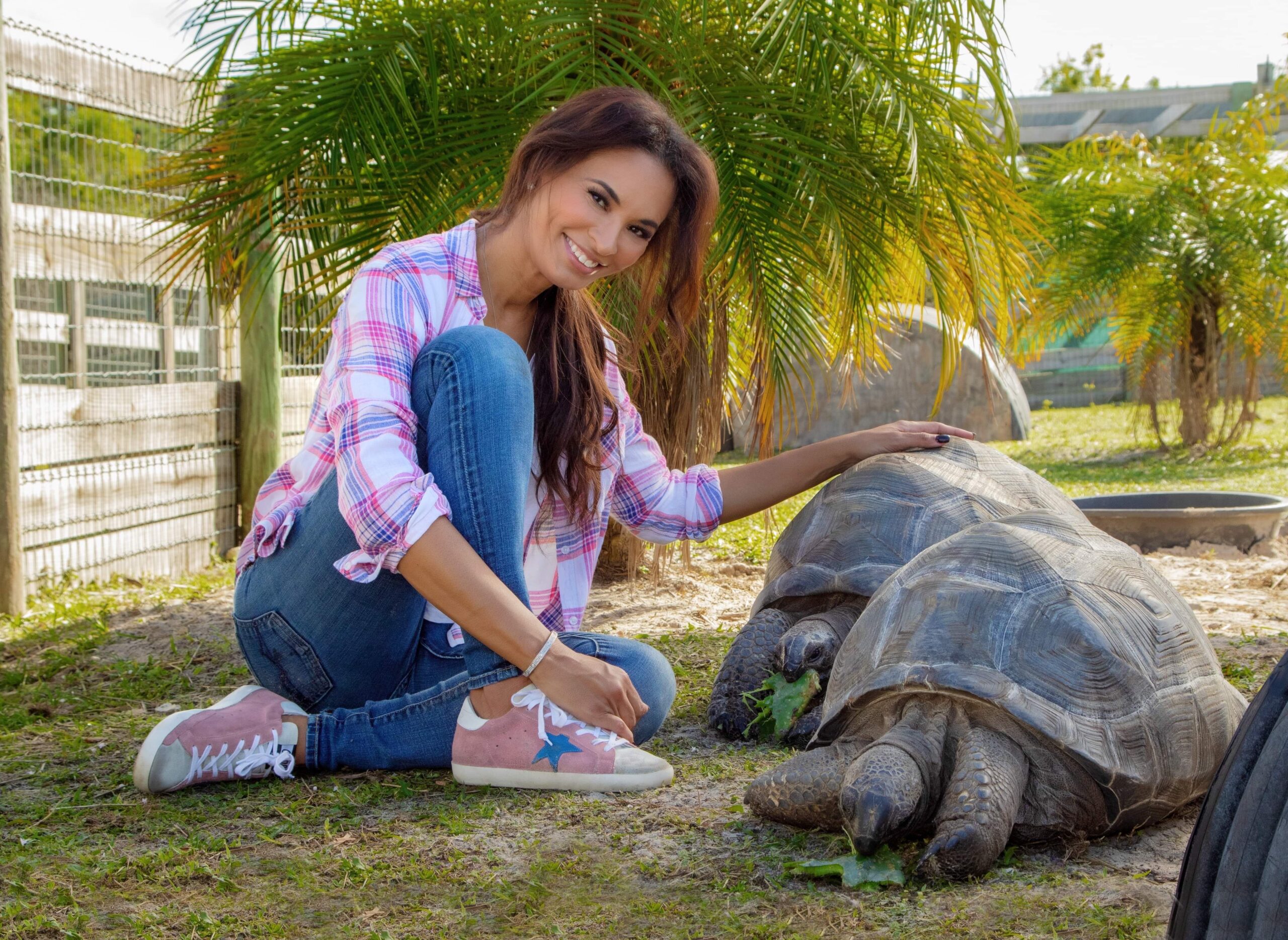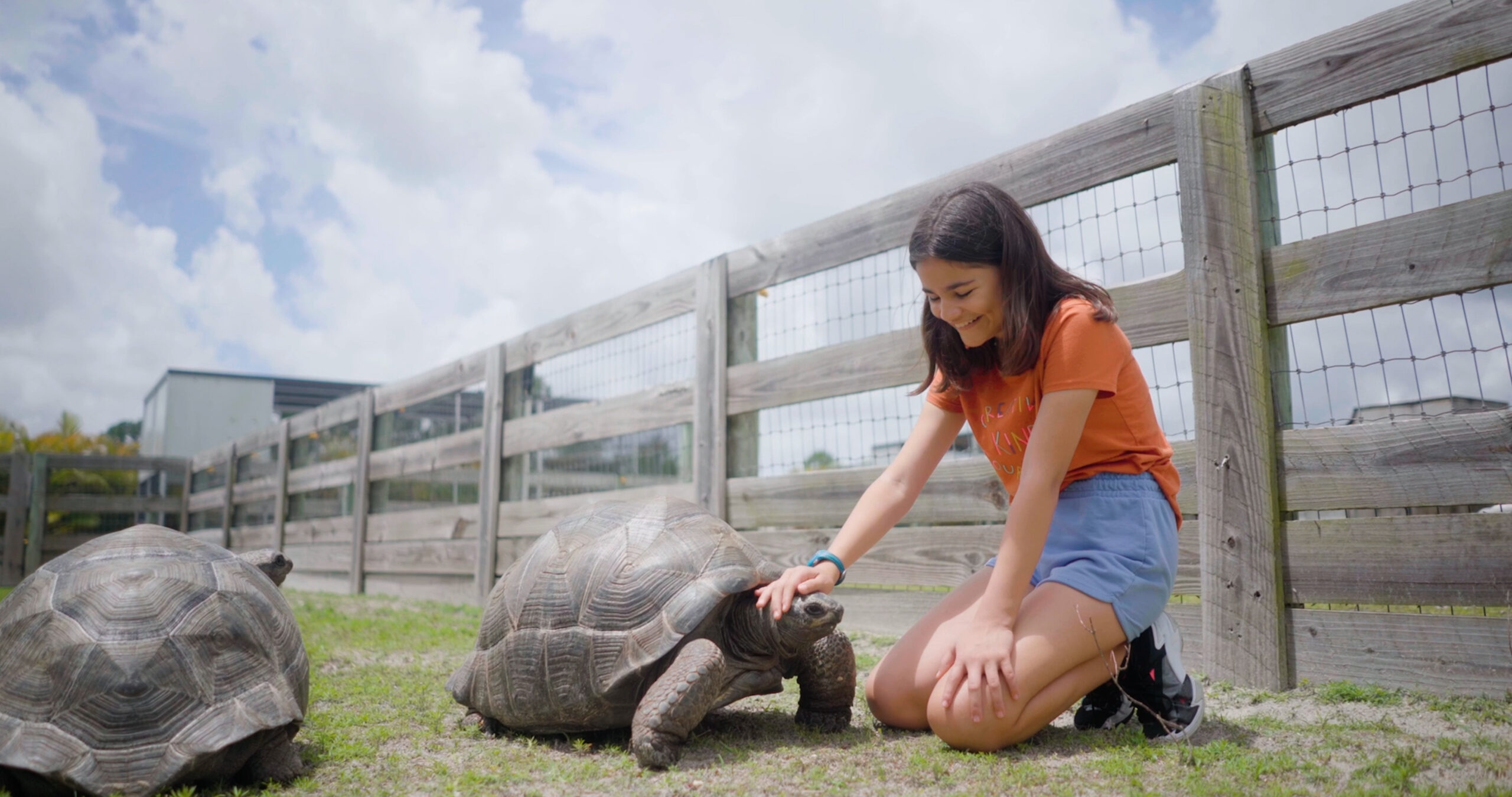Pebble & Gus have been raised by founder Karin Taylor and her children for the past ten years. For the first 6 years they lived at their home until moving to the farm 4 years ago for bigger pastures. Their favorite things are baths with the hose and eating the spineless prickly pear cactus pads that are grown at the farm for them.


Aldabra tortoises are the second-largest species of tortoise in the world and, like their larger relatives, (Galapagos Tortoises), this species is also restricted to a few islands north of Madagascar.
It is believed that tortoises are the longest lived of all animals with lifespans over 100 years, although this is hard to prove because they have outlived the scientists who were studying them, and proper records were not kept.
February to May is the breeding season for Aldabra tortoises. Reproduction in this species is similar to that of most land turtles. The male will mount the female, often while producing loud wheezing vocalizations, and then the female will dig a nest hole to deposit her eggs in to hatch 3-6 months later. The female lays between four and 14 eggs (each about two inches in diameter). There is no parental care provided for hatchlings which are about three inches long.
Aldabras are the second largest land tortoises in the world. The male’s carapace can measure 4 feet in length and they can weigh up to 550 pounds. The female’s carapace can measure 3 feet and can weigh 350 pounds.
Aldabra tortoises are able to go without food or water for long periods. These herbivores are natural grazers and browsers, feeding mainly on grasses and woody plants. However, they will eat meat when it is available and possibly even eat the carcasses of dead tortoises.
Our Aldabra tortoises eat a mix of romaine, spring mix, cactus pads and occasional fruit such as dragon fruit or strawberries. They browse on grass and weeds in their enclosure and are offered some hay a few times a week.
Aldabras are a very social tortoise species that are easily domesticated and can learn to identify their keepers or owners in a short time. On tours Gus likes to greet visitors at the gate and loves having his neck rubbed.
Giant tortoises will sleep an average of 18 hours in a 24-hour period, although this amount varies greatly among individuals.
Of the four types of giant tortoises once present on islands in the Indian Ocean, only the Aldabra Tortoise survived beyond the beginning of the 19th century. The rest were wiped out due to humans over-hunting. In the late 1880’s Charles Darwin and other eminent naturalists signed a formal petition with the hope of saving the Aldabra Tortoise, whose population was heading quickly to extinction. Fortunately, this protection and restriction in trade of the reptile has helped the species recover.
Aldabra tortoises will wallow in mud to protect themselves against mosquitoes.